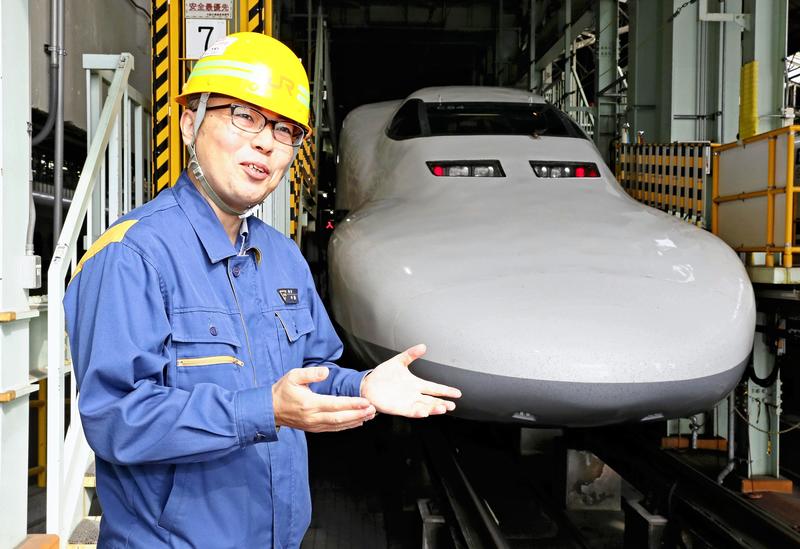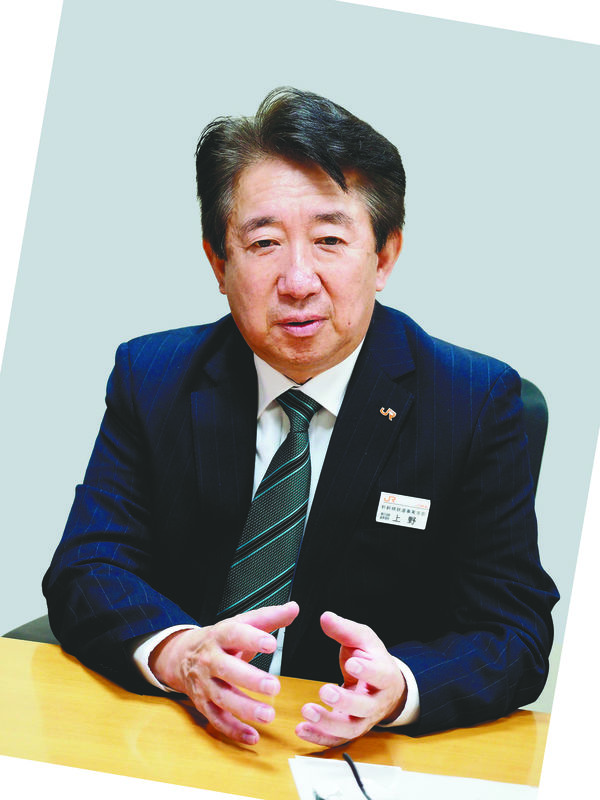
The 700-series train cars of the Tokaido Shinkansen Line of Central Japan Railway Co. (JR Tokai) are scheduled to be retired in March. These bullet train cars running between Tokyo and Shin-Osaka stations have become a well-known sight since the model's debut in 1999 and earned the endearing nickname "Kamonohashi" (platypus), due to the shape of its nose.
It is a masterpiece model, capable of not only running at high speeds but also offering passengers superior comfort inside the cars.
Two JR Tokai officials involved in developments and maintenance of the model talked about their memories.

Achieving comfort at high speeds
Masayuki Ueno, 63, deputy head of JR Tokai's Shinkansen service headquarters, said, "I'm full of gratitude to the series of train cars, which have contributed to services on the Tokaido Shinkansen Line for so many years." He said the retirement of the model makes him feel deep emotion.
Ueno is a leading expert in the development of Shinkansen train cars, and took charge of the development of the 700 series.
He said: "In those years [of development of the 700 series], I had to make judgments one after another about designs of the train cars every day. Among the Shinkansen projects I have been involved in, this one kept me the busiest."
In 1992, the 300 series debuted with a maximum speed of 270 kph. But the model had hurdles to clear, such as maintaining high passenger comfort inside the train cars.
When the development of the 700 series began, Ueno and his colleagues had to improve those features.
Though the maximum speed of the 700 series was the same as that of the 300 series on the Tokaido Shinkansen line sections, its acceleration was increased and integrated performance was largely improved.
Semiconductor parts with large capacities were newly installed in the 700 series to reduce the weight, and high-performance vibration control devices were designed in to improve passenger comfort.
The nose cone of the leading car was given its duckbill shape to reduce air resistance when entering tunnels, and thus lower the shock noise inside the carriages.
The 700 series debuted in spring 1999, and JR Tokai and West Japan Railway Co. (JR West) have operated a total of 91 of these trains.
In July this year, the newest model, the N700S series, will debut.
Ueno said: "The 700 series has wonderful structures, and the newest model is like the successor of the DNA. I feel relieved as I have fulfilled my responsibility as its designer."
Veteran from the testing phase
Akihito Kosaka, 45, in Settsu, Osaka Prefecture, is deputy head of JR Tokai's Osaka train car check facility who have worked as a maintenance engineer. In the summer of 1997, in his fifth year since joining the company, he was picked up for a team to run tests of the 700 series.
Colleagues around him on the team were all veterans in their 40s to 50s. "Maybe my superiors intended to make younger employees experience developments of new Shinkansen models so they could shoulder the future of the Tokaido Shinkansen Line," he said.
Almost daily in those years, he rode the cars being tested and was in charge of load measurements on the train platforms. During one period, he would make two round trips between Tokyo and Hakata stations in one day while checking data from the measurement devices.
On Christmas Eve one year, the measurement devices malfunctioned. It took him all night to retune the machines so that they could be used in test runs scheduled for the following morning. He said it is now a good memory for him.
About a year and a half later, the 700 series entered service. At that time, "I feel like I was sending off my own child to the outside world," he said.
"Precisely because I could encounter the 700 series as a member of the testing team, I have been able to enthusiastically do my maintenance work until now," Kosaka said.
When the 700 series make its last run on the Tokaido Shinkansen Line, he aims to go to see it with his children, and commit the last appearance of the 700 series on the tracks to memory.
Sold out in 34 seconds
The last run of the 700 series on the Tokaido Shinkansen Line will be the Nozomi No. 315 extra train on March 8. The train will depart Tokyo Station at 9:47 a.m. and arrive at Shin-Osaka Station at 12:20 p.m.
A departure ceremony will be held at Tokyo Station, and a retirement ceremony will be held at Shin-Osaka Station.
All seats of the train are reserved. Ticket sales began at 10 a.m. on Feb. 8, and all of the 1,323 seats were sold out in 34 seconds.
Read more from The Japan News at https://japannews.yomiuri.co.jp/







